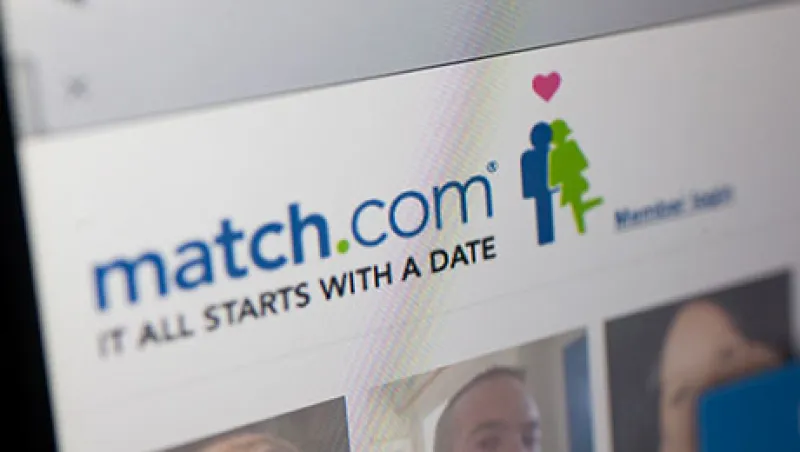When Match Group, a division of New York–based digital media behemoth IAC/InterActiveCorp, bought online dating site PlentyOfFish (POF) Media for $575 million in July, smaller dating sites felt encouraged by the Goliath-buys-David tale. Mark Brooks, an Internet dating business consultant who has worked with POF, says the news prompted one start-up to approach him with a business plan.
“They told me they’d like to get purchased by Match in six to nine months,” Brooks says of the would-be clients. He had to set them straight, explaining that the POF acquisition was many years in the making. POF didn’t look like much, but it had impressive back-end features and 100 million users.
That’s the thing about wild success stories like POF’s: They inevitably breed followers. But although dating apps are extremely popular to build, they’re not the easiest businesses to sell to venture capitalists.
The less savory traits of the business include the high cost of scaling dating apps for new metro areas and the fact that the more successful the app, the sooner the users stop interacting with the service. Andrew Chen, Silicon Valley start-up adviser, posits that if POF had been a messaging app with as many users, the deal would have reached $10 billion or more. “That isn’t to say that dating start-ups won’t find investors,” he says. “It’s just that big, mainstream guys aren’t going out and investing in ten or 12 dating sites the way they would for other types of online companies.”
Bill Pescatello, a partner at Lightbank, a venture capital firm in Chicago, is one of those rare angel investors who feel optimistic about online romance. “It’s crazy looking back in as short a time period as five years ago to see how Tinder and other mobile applications have changed the game,” he says.
Mobile allows a lot more dating to happen, period. Tinder requires users to simply upload a photo and some basic information, or just sign in through Facebook, to create a profile “card,” unlike fellow Match Group properties Match.com and OkCupid, which ask new members to answer a lengthy personality assessment questionnaire. Tinderites may be anywhere from age 18 to 35, the younger set being those not yet interested in marriage prospects and likely to stay with the service for a longer time, notes Brooks. Moreover, Tinder’s geolocation function allows users to home in on potential connections — a feature shared with early mobile adopter Grindr, an app for gay men that’s independently owned and in search of a buyer.
“No one looking for a date wants to sit at home alone with a computer,” says Brooks. “It’s lonely.”
Other apps have since adopted the mobile-oriented approach.
Coffee Meets Bagel (CMB), a three-year-old dating site started by three business-savvy sisters in San Francisco, has combined a few app-world approaches in the company’s revenue structure. Like other services, CMB is free to start with and involves a quick sign-up, but the sisters have also incorporated the flash sale model, in which consumers are encouraged to act fast. What CMB dubs a “bagel” — code for a potential match — is sent to a user every day at noon. The bagel will become unreachable in one day, at which time reconnecting will cost a player some digital beans, purchased in-app. “From the research we’ve seen, endlessly flipping through pictures of dudes just doesn’t do it for most women” — the goal here is to appeal to women, which most sites don’t do, says Pescatello, whose firm put $600,000 into CMB. “With CMB, you get one match at noon. This is the opposite of getting sprayed by images,” he says.
All of the site’s so-called bagels are chosen from users’ Facebook friends of friends, a premise also employed by Hinge, another app. (Tinder includes people from one’s Facebook network among its cards, but doesn’t only pull from connections.) The friends-of-friends approach addresses another complaint women have about online dating: receiving messages from total strangers who elaborate their desires with a provocative selfie snap — or those users who flat-out lie about their intentions or relationship status. In a highly publicized update in May, Hinge put users’ Facebook relationship status front and center on their dating profile. In the week following the update, the attrition rate among male Hinge users was 40 percent higher than average; among women, subscription rates picked up 26 percent.
Dawoon Kang, CMB co-founder and graduate of the Stanford Graduate School of Business, says she believes her site will grow to rival Match. Though she’s not releasing user numbers, she says that CMB has seen double-digit growth month-over-month in the U.S. and in the few global cities to which it has expanded. She can rattle off the stats that make her bullish on the sector. In the U.S. there are 80 million singles between 21 and 40. Just this year, the number of singles in the U.S. passed the number of married people. Millennials, who now outnumber boomers, are getting married later in life. Says Kang: “There’s going to be a huge shift in the business model from expensive subscription to freemium or pay-as-you-go. As more apps provide services that are just as good or better than sites like Match.com, and people realize that you don’t have to pay $60 per month for a service that may not be working for you, it’s just won’t be attractive anymore.”
That kind of confidence made it easy for her to turn down Mark Cuban’s offer to buy the company for $30 million when the founding sisters appeared on the television show Shark Tank. The women were seeking $500,000 for a 5 percent stake in CMB.
Chen, who counts CMB among his clients, agrees that mobile could reinvent the market, considering that 6 billion people around the world have access to a cell phone. “Who knows? Maybe it will make it so that the next POF, rather than topping 100 million users, will be an order of magnitude bigger — closer to a billion,” he says.
If investors start to believe that, hooking up with venture capitalists will become a lot easier.
Get more on trading and technology.






